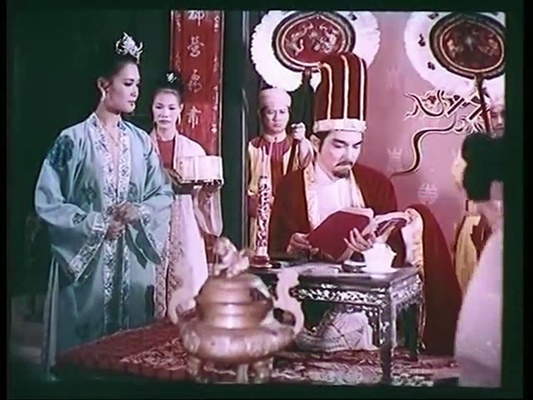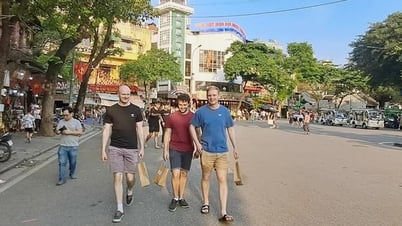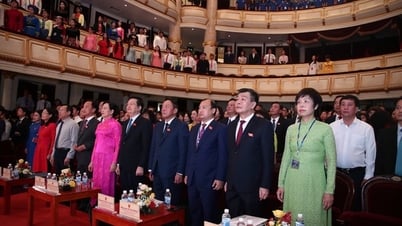In the process of national development, cultural development always plays an extremely important role, being the foundation for the struggle to preserve the moral foundations and justice of society. In this short article, I would like to mention the field of Cinema as a "heavy weapon" of the cultural front that in recent decades has been loosened and forgotten in an incomprehensible way.

Revolutionary films have contributed to encouraging and motivating our army and people in the two resistance wars. In the photo: Scene from the film Parallel 17: Day and Night
In fact, the cinema of any country exists in two parallel states. That is a popular entertainment platform and a mainstream whose mission is to promote the history and cultural identity of that country and people. Normally, the entertainment-oriented film stream mostly aims for revenue, although not always successful. The mainstream with more serious and profound content will find it difficult to have stable revenue, or some guarantee from creative reality to the box office. In the past 20 years, although these two quite separate film streams still exist in Vietnam, there is a confusion in the perception of managers - especially the financial review system - causing producers aiming for mainstream films to always be under pressure when it comes to revenue. The question here is when we consider cultural development as a foundation for human development for the country, where does mainstream cinema with its mission of propaganda and socialeducation fit into this cultural strategy? It seems that the rather spontaneous and directionless development of market cinema is overshadowing the role and purpose of investment in cinema?

Scene from the movie Long Tri Festival Night
So where does the funding for state-owned film units come from? For more than 20 years, this funding source has been almost completely cut. There is no longer a budget for management activities, but only funding for each project. This has led to a situation where the already limited filmmaking budget is cut to provide for the management system. As a result, only about 1/3 of the funding allocated for the project is actually poured into production. Thus, no matter how good the unit leader is, he or she is helpless and accepts the production of films that no one sees.
From another perspective, perhaps we should understand that Cinema is not just a business field. Mainstream Cinema is even less so. If we still need a oriented cinema, we need to end the policy of mechanically equitizing state-owned cinema units, a practice that only aims to fulfill a certain target, which has invisibly created an excuse for some people inside and outside the system to evade and profit. We need to retain, protect and develop at least one state-owned cinema facility to ensure that while we still adhere to the principles of a market economy , we still maintain the principle of “socialist orientation”.

Scene from the movie Fairy Tales for 17 Year Olds
Some people will say that this is too difficult, because the reality is that the film workforce has a generational gap due to unclear training methods and goals. Every year, many film students graduate from both the North and the South, but the conditions for career development in the mainstream film industry are extremely limited, and most of them pursue short-term goals to support themselves.
It must be said that there is no shortage of human resources for cinema. However, the human resources for mainstream cinema have almost reached zero. This cannot be blamed on anyone, because in the past ten years, market cinema has emerged with dozens of films each year, while mainstream cinema works are only a trickle. It is easy to see that a person who is very successful in the market cinema sector can hardly succeed in mainstream cinema. Because of a natural principle: If the knife is not sharpened, how can it be sharp?

Scene from the movie When October Comes
Thus, in the revised Cinema Law, it is necessary to affirm the role of state management in this film genre through specific and comprehensive actions. In which, retaining at least one state-owned film establishment (including feature and documentary films) and creating a sustainable source of capital and human resources for its existence and development is a prerequisite. At the same time, there must be sufficiently attractive cinema activities and events to orient the market cinema sector to honor works of true artistic and humanistic value.

Screenwriter Trinh Thanh Nha
It seems that it is time to re-examine the true role of mainstream cinema in the strategy of cultural and human development. There needs to be a comprehensive and detailed revival plan for the establishments responsible for maintaining this film genre.
With determination and effort, I believe that reviving the mainstream of our country's cinema is not difficult.
It seems that it is time to re-examine the true role of mainstream cinema in the strategy of cultural and human development. There needs to be a comprehensive and detailed revival plan for the establishments responsible for maintaining this film genre.
(Screenwriter TRINH THANH NHA)
Source





![[Photo] General Secretary To Lam receives Australian Ambassador to Vietnam Gillian Bird](https://vphoto.vietnam.vn/thumb/1200x675/vietnam/resource/IMAGE/2025/6/26/ce86495a92b4465181604bfb79f257de)
![[Photo] Candidates take the first graduation exam with the new Literature topic](https://vphoto.vietnam.vn/thumb/1200x675/vietnam/resource/IMAGE/2025/6/26/dfded9e317554c25a3e26defe672ebb7)






















































































Comment (0)